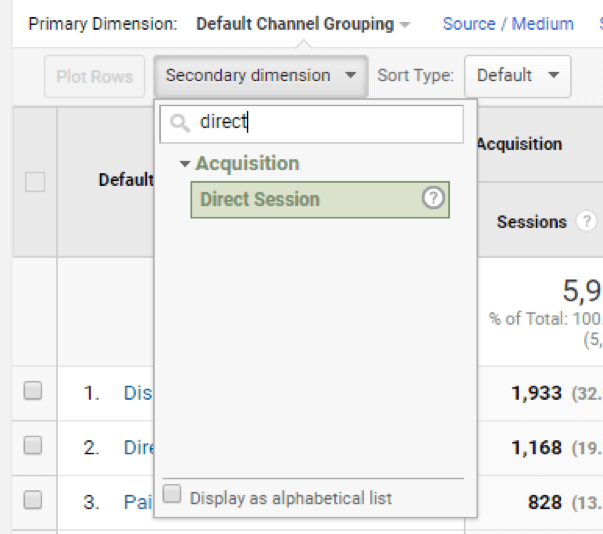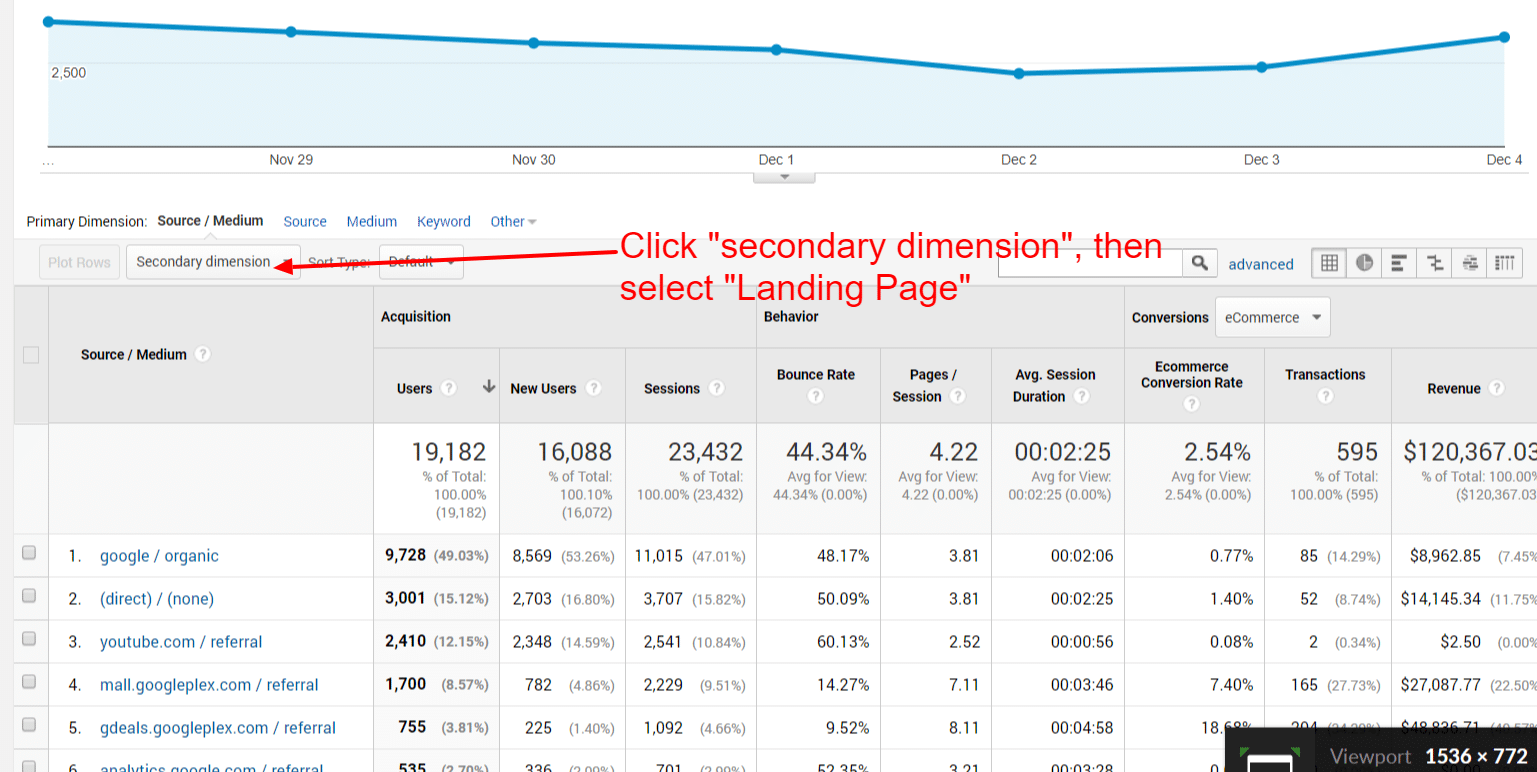Enhance Your Information Evaluation Utilizing Additional Dimension in Google Analytics
Exploring the capabilities of secondary dimensions in Google Analytics opens up a world of opportunities for refining data evaluation. By layering additional measurements onto primary information sets, a more detailed narrative arises, dropping light on individual communications and performance signs.
Comprehending Second Measurements
Secondary dimensions in Google Analytics refer to added parameters that can be added to the primary dimension, allowing for a much more comprehensive evaluation of data (Secondary Dimension in Google Analytics). By integrating additional dimensions, experts can section and filter data to uncover patterns, patterns, and correlations that may not be evident when looking at the data as a whole.

Benefits of Making Use Of Second Measurements
When evaluating information in Google Analytics, the utilization of secondary measurements uses vital insights into customer behavior and efficiency metrics. By including an additional measurement to your key data, you can dive deeper right into the features of your site site visitors and their communications. Among the essential advantages of utilizing second measurements is the capacity to section and contrast data better. This division enables you to comprehend how different variables, such as demographics or traffic sources, impact customer habits and conversions (Secondary Dimension in Google Analytics).
Additionally, second measurements assist in identifying patterns and connections that might not be instantly apparent when taking a look at the information in seclusion. This much deeper level of analysis can discover valuable details that can direct advertising and marketing strategies, internet site optimization, and general service decisions. In addition, additional dimensions enhance the context of your key data, supplying an extra detailed view of user engagement and performance metrics. On the whole, the usage of second measurements in Google Analytics can considerably improve the depth and high quality of your information evaluation, resulting in even more enlightened decision-making and boosted results.
Just How to Add Secondary Measurements
By integrating additional measurements in Google Analytics, individuals can acquire much deeper understandings into their data evaluation process, enabling for more detailed analysis of customer actions and efficiency metrics. Including secondary dimensions is an uncomplicated procedure that can substantially enhance the deepness of analysis. To add a second measurement in Google Analytics, begin by browsing to the report you wish to evaluate. As soon as in the record, find the "Second dimension" tab above the data table. Click it to disclose a dropdown food selection with different options such as Actions, Innovation, and Custom Dimensions. Select the measurement you intend to add, such as 'Source/Medium' or 'Tool Category'. This second measurement will after that be put on your existing data, giving additional context and enabling an extra comprehensive analysis of individual interactions. By using second measurements efficiently, individuals can uncover important understandings that might have or else been ignored, causing informed decision-making and improved efficiency techniques.
Studying Data With Secondary Measurements
Using second dimensions in information evaluation offers a more comprehensive understanding of user habits and performance metrics. By adding a secondary dimension to your key data established in Google Analytics, you can dig much deeper into the attributes of your internet site visitors and their communications. For circumstances, integrating the primary measurement of 'source/medium' with the second measurement of 'landing web page' can disclose which particular pages are drawing in traffic from different sources, helping you optimize these web pages for far better interaction.

Essentially, examining information with secondary measurements equips go to the website you to get valuable insights right into individual behavior, identify patterns, and make notified decisions to improve the performance of your electronic buildings.
Finest Practices for Additional Dimensions
In information analysis, incorporating secondary dimensions effectively can significantly enhance the depth of understandings obtained from metrics and user actions patterns. When making use of additional dimensions in Google Analytics or any kind of other analytical device, it is critical to follow best techniques to guarantee the precision and relevance of the data analysis.
One secret best technique is to very carefully select additional dimensions that match the key measurement being assessed. Picking second dimensions that offer extra context or more segmentation can supply a much more comprehensive understanding of the information. It is additionally important to prevent overcomplicating the evaluation by consisting of a lot of secondary measurements, which might bring about complication additional hints or dilution of insights.
Furthermore, it is recommended to try out different combinations of main and secondary measurements to discover brand-new connections and patterns. On a regular basis examining and refining the choice of additional measurements based upon the specific objectives of the analysis can cause more actionable understandings. By adhering to these finest techniques, data analysts can take advantage of second measurements effectively to improve the general information evaluation procedure and decision-making abilities.

Final Thought
Finally, incorporating secondary measurements in Google Analytics is crucial for a comprehensive data evaluation technique. By leveraging additional measurements along with primary ones, analysts and marketers can discover beneficial insights and relationships that can inform decision-making and maximize digital advertising and marketing methods. Recognizing exactly how to properly make use of secondary measurements and complying with ideal techniques will permit specialists to remove significant data and improve their overall performance metrics.
Secondary dimensions in Google Analytics refer to additional criteria that can be included to the key measurement, enabling for a more see thorough evaluation of data. By integrating secondary dimensions, analysts can segment and filter data to discover patterns, fads, and correlations that may not be apparent when looking at the data as a whole. Incorporating the primary measurement of 'source/medium' with the secondary measurement of 'touchdown web page' can reveal which certain web pages are attracting web traffic from various sources, helping you optimize these web pages for better involvement.
One key ideal method is to carefully select additional dimensions that complement the main dimension being evaluated. By following these best practices, data analysts can utilize additional dimensions effectively to improve the general information evaluation procedure and decision-making capabilities.